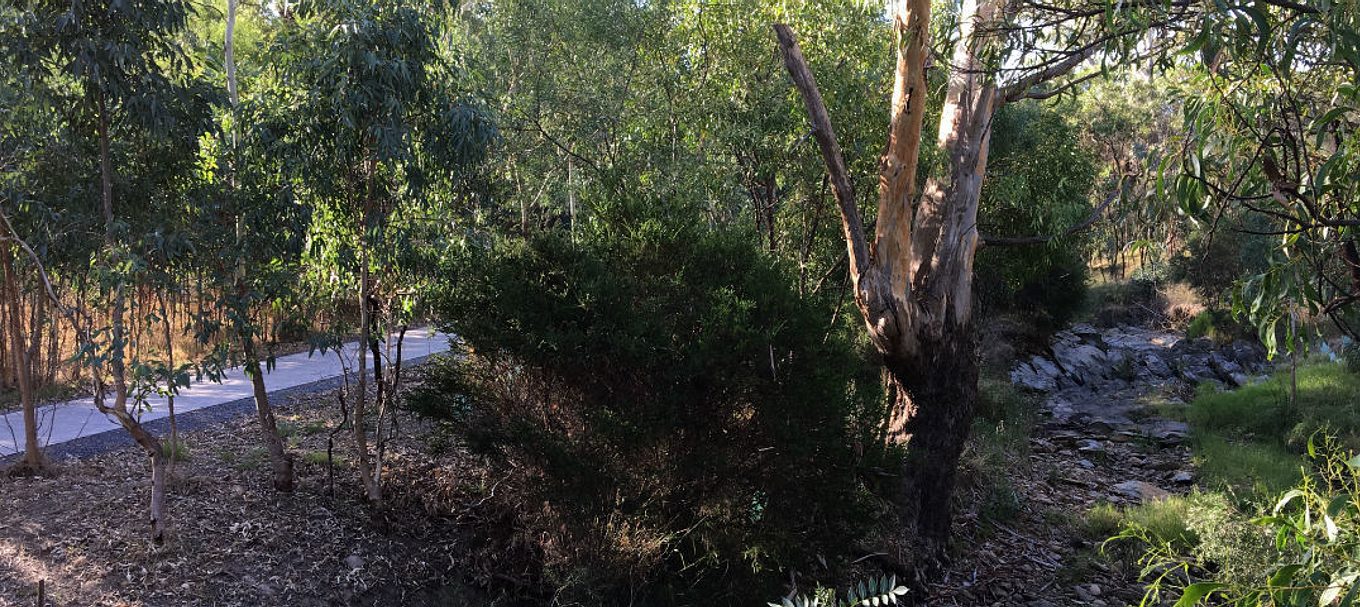
How to care for urban creeks
Do you have a creek running through your property? If you do, it’s really important you look after it – and not just for the sake of your own backyard.
A well-managed and healthy creek can help drain stormwater, reducing the impacts of flooding and preventing soil erosion. It also gives wildlife a place to live, with even the smallest streams providing a home for native fish.
A clean creek in your backyard is also important to your immediate neighbours and those further downstream, including coastal residents and visitors.
Taking care of creeks might be easier than you might think. This property owner’s guide to managing healthy urban creeks will make you an expert in no time, but let’s get started with a few key points:
Plants to pick and plants to pick out
Native plants will love your creek and there’s a good chance you’ll love them too, as they help to clean the water, prevent erosion and thrive in floods and droughts. This makes them perfectly suited to South Australian conditions.
You could consider a gorgeous swamp wattle (Acacia provincialis) if you’re in the wider Adelaide area, Kangaroo Island or the South East. It grows up to six metres high and has golden yellow ball-shaped flowers during winter and spring. Otherwise how about a native raspberry (Rubus parvifolius) with its tasty, red fruit.
Your local native nursery will be able to suggest the right plants for your creek, or you can use a plant selector to guide you – like this one, that’s designed for the greater Adelaide region.
Regular weeding is a must, as weeds like feral olives, bamboo and blackberry give native plants a hard time and don’t provide native wildlife with the things they need to survive.
But it’s not as simple as ripping them all out at once. If your creek bed becomes exposed it will be susceptible to erosion, so a staged approach to weed removal and revegetation with local native species is recommended.
Erosion: what’s the big deal?
Creek erosion can cause serious damage by exposing tree roots and washing away the foundations of any fences, sheds or houses built nearby.
To determine whether erosion is impacting on your waterway, look for signs such as exposed soils and visible tree roots or creek banks that have been cut away underneath.
If you think you have severe erosion damage, you may need to consult an engineer for advice but why not contact your local natural resources centre to speak to a District Officer first.
To stop erosion happening in the first place, try planting your creek banks with reeds, sedges and shrubs. And remember, local native plants will be your best friend.
Is your creek getting clogged up?
Think footbridges, driveways, fences – these can all obstruct waterways and cause issues if there’s a flood.
If you plan to make any changes within your creek bed, such as building a shed, putting rocks in it, or removing weeds, you may need a water affecting activity permit.
Some debris can actually be beneficial to your waterway by slowing down water flows, which reduces erosion, and providing habitats for local species. If you want to know what’s what, be sure to check with your local natural resources centre to speak to a District Officer.
Minimising pollution
It may come as a surprise to you, but you have an obligation to ensure pollutants that could have a negative impact on waterways do not reach the stormwater system from your home and garden.
Pesticide use, outdoor cleaning and even gardening are just a few examples of things that can be harmful to waterways, so it’s important to get up to speed so you don’t inadvertently cause any damage.
One handy tip is to always rake up leaves on any concrete or paved areas of your yard, so they don’t get washed into waterways. Use them as mulch on your garden instead or put them in your green council bin. Leaves that end up in waterways reduce the water quality, which makes life difficult for native fish, bugs and other animals.
Preparing for floods
You can’t stop your creek from flooding but you can definitely minimise the impact. Check that no large trees are choking the creek and where possible, make sure they don’t grow too close together, to avoid fallen logs and branches getting trapped, effectively damming your creek.
Low plants are the best choice for the main creek channel thanks to the way they bend in high flowing water. Also make sure fences or debris aren’t blocking your creek.
Creeks to guide you
To see the difference a little TLC can make to urban creeks, check out these spots not far from Adelaide:
- Bellyett Reserve – Stonyfell Road, Stonyfell
- Dunns Reserve – Dunn Avenue, Glenalta
- Glamorgan Drive, Redwood Park
- Hubbe Court Reserve – Hubbe Court, Burnside
- Sturt River Linear Park – Main Road, Coromandel Valley (south of Dalls Bridge)
These helpful tips are most relevant if you live in or around Adelaide, and are brought to you by our team atNatural Resources Adelaide and Mount Lofty Ranges. If you live further afield and would like help selecting plants, determining which permits you need, or more information on preventing erosion damage, contact yourlocal natural resources centrefor assistance.
This story was originally posted in March 2017.





